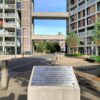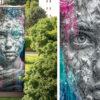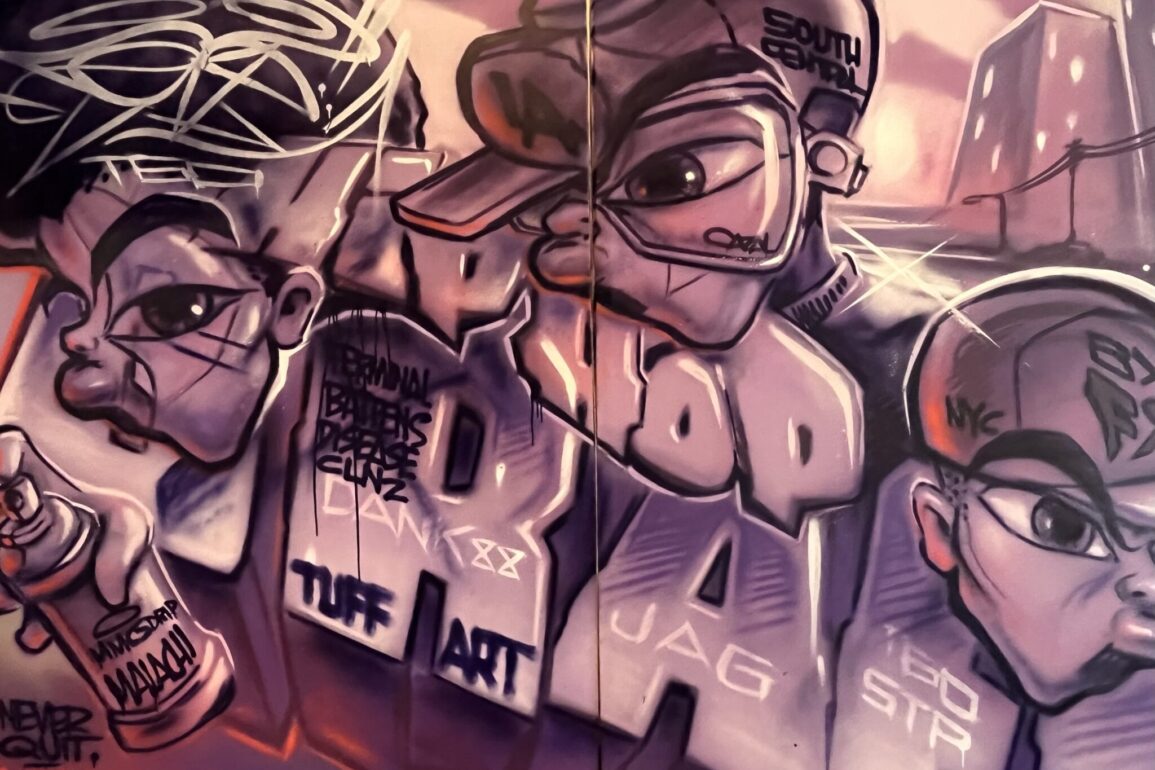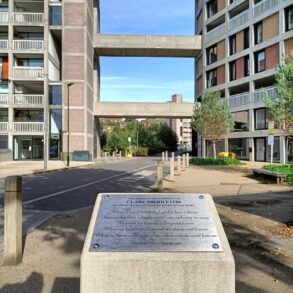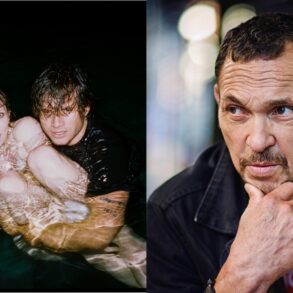I suspect you may have driven around the city with a kid in the backseat and, at some point, been tempted to express outrage about the writing on the wall, by which I mean a colorful swath of graffiti tagged on the side of a building or other public space.
Hold that thought—for you and your child.
Graffiti has existed since we were in caves. And yet, at times, it feels like every building and wall in the city has become a spot for someone to make their mark. Just recently, for example, blue-painted symbols arrived on my neighbor’s white fence. Graffiti is universal—it’s found in every city and nation. Whether you like it or hate it, it evokes emotion. It makes a lot of people mad. That’s part of the reason it is a critical form of expression.
A look at a complex art form
And it is why I recommend visiting the King Street Station’s newest exhibit with a young person. It is likely to become an Aha! moment for both of you and an opportunity to rethink how you react to art and expression in the urban landscape.
“COMPLEXITY” is a good name for this exhibit, curated by artists Sire One and Baby-G Carswell. It includes over 20 gigantic works, most from the Dog Town Collection at the APEX Art & Culture Center in historic downtown Everett. Who knew there was a graffiti museum in Puget Sound? The paintings you will see are masterpieces created by some of the most influential graffiti artists of the past 50 years
After viewing COMPLEXITY, I’ve put a field trip to APEX on my must-do list.
In addition to the graffiti works from APEX, the exhibit includes four pieces that were done on the plaza in front of the station by artists who are currently expressing themselves. They created the work while people watched and then had there art join the collection in the exhibit.
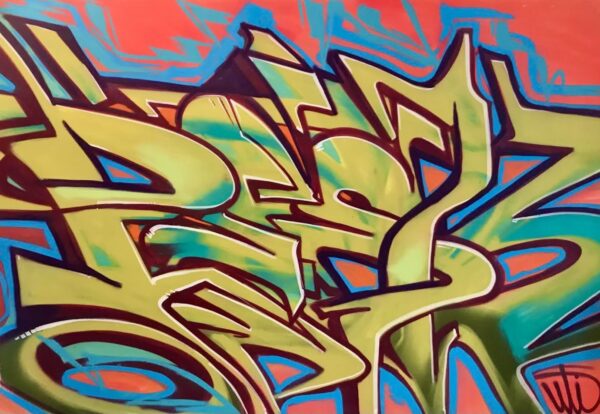
From the exhibit COMPLEXITY now showing at King Street Station in Seattle. Photo by David Turner
From joy to pain, brilliance
Some of these works are joyful or offer a humorous spin. Others evoke moments of pain, alienation, and loss. All are vibrant, colorful, and brilliantly executed.
Together, the painted art and performance pieces force important questions: What in our society alienates kids from art class? What might push young people into the dangerous world of nighttime tagging, risking life and freedom in order to ask us to see them and recognize their angst? Without judging graffiti as bad or good, ask your child these questions. You may learn something important.

From the exhibit COMPLEXITY now showing at King Street Station in Seattle. Photo by David Turner
If you go
As you take the stairs to the gallery, stop first at the artwork depicting a blue clown girl. It’s the first work of the exhibit and speaks to the skill of every artist to follow. She is somewhere between a picture of an actual person and a sad girl wearing a clown mask with a character hanging from her earlobe. She seems deep in thought and memory as she observes the city below.
Once in the gallery, be sure to look up to find a host of mailing labels that have become the canvas of unknown creative contributors. Skateboards, given new life after wearing out, float from the ceiling, and portraits of beautiful people, naughty people, and homeless people fill the walls.
You may not understand the work at first, but there is much that will speak to the youngster you were and the one you bring with you. One thing is for sure. Both you and your child will wonder how these paintings were created and admire the skill they demonstrate.
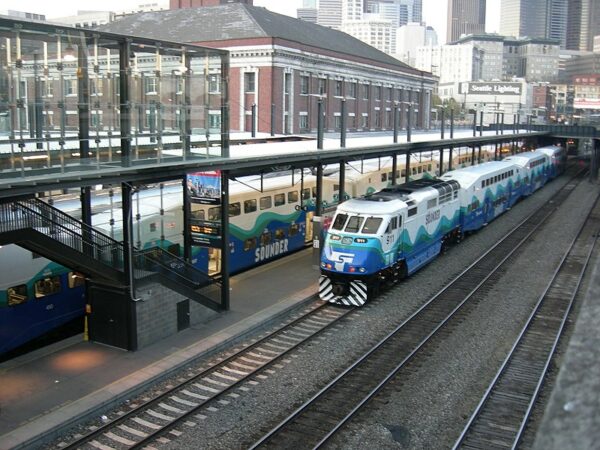
Watch the trains at King Street Station. Photo by Joe Mabel
A 3-fer
If you’re with a child who loves trains, visiting COMPLEXITY is a double win. Stop at the plaza on the station’s north side and look over the wall at the passenger trains traveling through. King Street is a dream for those who love rail transport.
The station is also rich in history. When you enter the building, walk to the balcony overlooking the lobby, where you’ll see people waiting to board their train. Notice the benches (original, circa 1906). At these same benches, soldiers of various wars waited for the train to take them to serve or return home to their eagerly waiting families. Compare them to the seats across the lobby that look like the ones you will find in every airport in the country today. What an opportunity to imagine the century of history between the different seating options.
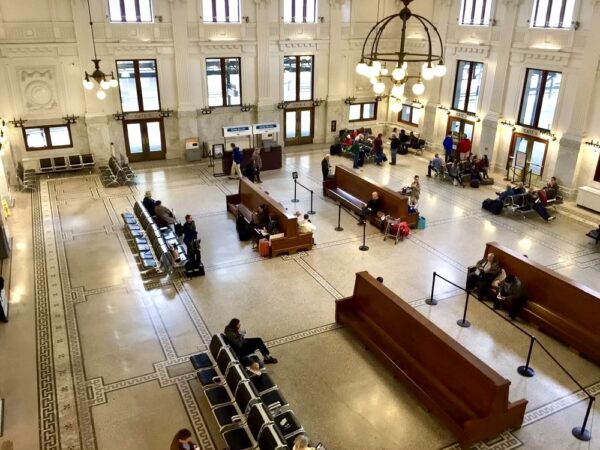
Balcony view of history. Photo by Peter Hu / Creative Commons
While you are there
Look for the exhibit from the ten teens chosen for the Youth in Focus Creative Career Cohort Showcase. Their images center on a single theme: “The change you want to see in the world.” The youth exhibition is open through June 22.
The details
COMPLEXITY runs through July 20. King Street Station exhibits are free. Gallery hours are Wednesday to Saturday, 11 a.m. – 5 p.m., and the first Thursday of the month, 11 a.m. – 8 p.m. King Street Station is a hub for many bus lines and the streetcar from Capitol Hill. But if you must drive, park in the Triangle Garage (the one that looks like a sinking ship) at 515 2nd Ave. and walk the few blocks to the station.
Read more:
David the Docent: PNB’s ‘Coppelia’
David the Docent: A trip to the blue house
Docent tips: How to visit a museum with a child
This post was originally published on this site be sure to check out more of their content.

